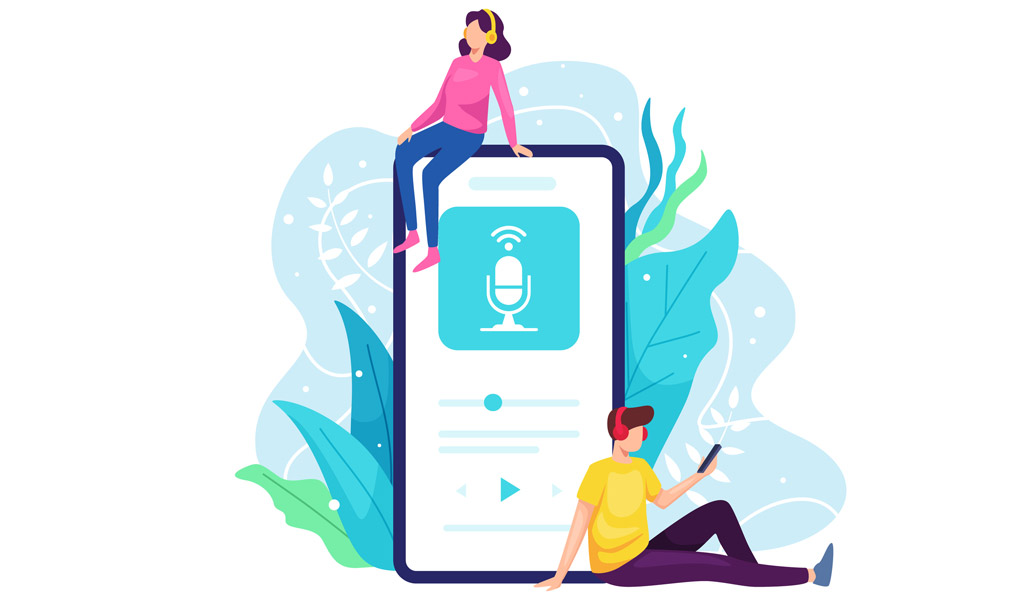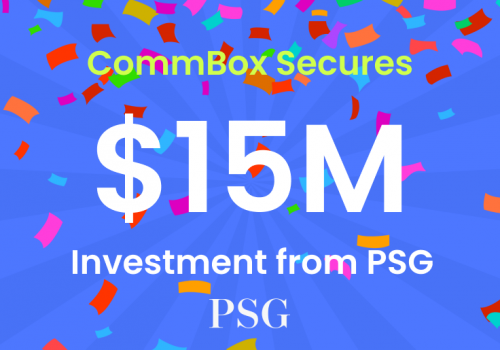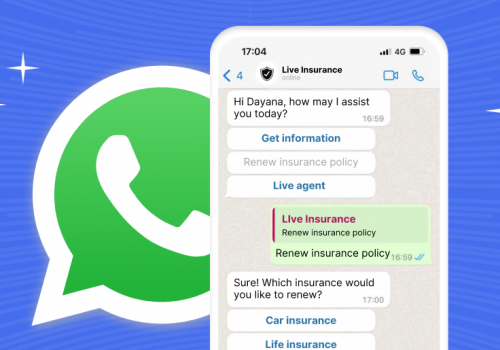B2B SaaS Companies. In any B2B SaaS company, you’re going to be spending a lot of time developing your marketing content to draw new business in, increase your brand awareness, and prove your subject authority. Every B2B SaaS company understands the value of the typical content types like videos, blogs, FAQs, etc. What about podcasts? Can podcasts be the missing puzzle piece in your B2B SaaS marketing strategy?
Why Should You Care About Podcasts?
When people like a podcast, they tend to subscribe and listen to it regularly. Podcasts are more effective at doing this than other forms of content, like a blog with a Call to Action at the bottom urging users to sign up to the newsletter so they don’t miss any future blog posts. Most of us get so many emails that we don’t have notifications turned on for email. Our notifications are only on for work-related or personal emails – marketing emails go straight into another pile. As a result of this, people only tend to check marketing emails periodically. They might scroll through their marketing emails once a week or months a month, or even once every six months, and just read anything that catches their eye. It’s not a guaranteed consistent form of engagement in the same way podcasts are.
Podcasts are great time-fillers. Have a 30 drive to work? Or a long train ride? Listen to a podcast. The same is even true in work. Sometimes office environments can be noisy places – the constant hum of the air conditioning, the beeping of the printer, the stomping of colleagues, and the never-ending chitchat in the walkways and around desks. Sometimes we want to put our headphones in and drown out that noise. There are usually two ways to do this – with music or with a podcast. Here are some stats you should know about podcasts:
- 74% of podcast listeners tune in to learn something new.
- 67% of podcast listeners are between 18 and 44.
- Approximately 45% of podcast listeners have an annual household income of more than $250,000. Additionally, 41% of listeners make $75K or more a year, compared with only 29% for the general population.
- 65% of listeners listen to podcasts on a mobile device.
- 52% of podcast subscribers listen to entire episodes of the podcast.
- 54% of podcast listeners say they think about buying an advertised product.
- 77% of users listen to podcasts for more than 7 hours a week.
What Can We Learn from These Statistics?
74% of podcast listeners tune in to learn something new.
Intellectually stimulating content is what works for podcasting. This is excellent news for businesses who want to start podcasting. Why? Because it’s your opportunity to establish yourself as an authority in the industry by sharing new information, interviewing experts, or debating pressing industry topics.
67% of podcast listeners are between 18 and 44.
Most podcast users are young and economically active. They are in a position to recommend a product or service to their workplace.
Approximately 45% of podcast listeners have an annual household income of more than $250,000. Additionally, 41% of listeners make $75K or more a year, compared with only 29% for the general population.
Again, they are economically active and tend to hold higher-ranking positions within the businesses they work for. This won’t apply to every listener of your podcast, of course. But it’s also true that people who are more engaged with businesses/industry leader content tend to be people looking to deepen their knowledge of a subject to further their career. Your listeners will likely have influence within their workplace and be able to recommend your SaaS product.
65% of listeners listen to podcasts on a mobile device
Content geared towards mobile devices is excellent because we have our mobile devices on us all the time. You can engage with users at any point in the day, not just when they’re sat at their desk.
52% of podcast subscribers listen to entire episodes of the podcast
Anyone who has analyzed the “read” stats on blog content knows that the numbers can be frustratingly low at times. People often tend to read a blog post until they find the piece of info they’re looking for and then click off. Some people hit the back button quickly if they see the post is too short or too long. 52% of listeners listening to the entire episode is huge and allows you to get everything across without rushing.
54% of podcast listeners say they think about buying an advertised product
This one doesn’t need much explanation! Over half of the listeners are paying attention when you advertise your SaaS product.
77% of users listen to podcasts for more than 7 hours a week
People who listen to podcasts tend to be highly engaged and avid fans of the content type. By making podcasts, you can connect with them directly for several hours every week (depending on how much content you put out).

8 Magic Tips For Creating a Successful B2B SaaS Podcast
Okay, so now you know why you should be making a podcast, but where do you start?
1. Define Your Podcast Strategy
B2B SaaS podcasts come with a ton of benefits for your business. They increase your brand awareness, establish you as an authority, allow you to promote your products, and more. You first need to decide what your strategy is.
What’s your strategy?:
- To connect with your ideal persona?
- To become a number 1 authority in your industry?
- Build a community?
- Increase your brand awareness?
- Generate leads?
You don’t have to pick just one, of course. But it helps to keep all of these in mind when deciding what kind of content to create. If you focus heavily on becoming an authority, then building a community and generating more leads should naturally follow on from this. When you’re an industry expert, it’s much easier to make sales – your clients trust you.
Podcasts can also help generate leads by increasing traffic to your website. You can post a link to your website in the episode description. An even more powerful strategy is to upload your podcast transcript as a blog post. This allows you to create one piece of content for two mediums and potentially double your reach.
2. Define Who You Are Trying to Reach
Ideally, your audience should closely overlap with your ideal buyer persona. More broadly, you should be trying to reach people who can benefit from your content (learn something new and come back for more) and have the resources to pay for the product or the power to influence those who do.
3. What’s Your Podcast Format?
You should pick a format and stick with it for the majority of your episodes. For example, you could go with a solo podcast, where one man or woman reads from a transcript. You could have more of a discussion-based format where two people discuss one topic per episode or recap and analyze industry news. Generally, you don’t want more than two or three hosts on your podcast because things can start to get confusing for listeners, or discussion can be more easily derailed from the original talking point.
Alternatively, you can go with an interview-style format where you interview key people in your industry. Some of the most popular podcasts like The Joe Rogan Experience and The Jocko Podcast follow this format.
But don’t try to do everything. Remember that people tend to have a preference, and when they subscribe to a podcast, it’s because they expect a consistent experience. If they’re only interested in solo podcasts and every other episode you interview someone, that person will get frustrated and might unsubscribe. It’s okay to do a one-off episode in a different style, like an interview every six months, but you should otherwise stick to your main format.
4. Get The Community Involved
A great way to boost the success of your podcast is to get the community involved. You can do this by asking a question on social media and then discussing the answers and giving shout outs during one segment of the episode. You can also invite some people on as guests for a segment. An example of this (albeit outside of the B2B world) is the Grammar Girl podcast. The host has a segment at the end of each episode where she plays a ‘familect’ clip. A familect is a word that only you or your family use that has a funny or interesting story behind it. Like how your kid called chicken “jicken” so you’ve now been calling it jicken for 20 years. Users can ring up and leave a voicemail with their familect story, and it might get played in the episode.

5. Be Deliberate About Your Guests
If you’re going to invite guests on for interviews, be deliberate about who you pick. As humans, we often choose the easiest option or the people who look and feel the most like us. But if you want diversity, you have to make a concerted effort to do so. Just be aware that your listeners will likely come from a variety of backgrounds – 56% of podcast listeners are male, and 44% female. Even if you work in a male-dominated industry, it would be a mistake not to seek out female guests who can add to the conversation. When people don’t see themselves reflected in the media they consume, they start to think it’s not really for them – that they aren’t the target audience or a valued listener. People who don’t feel valued don’t buy your products.
6. Set a Time Limit
If you want to attract highly engaged listeners, then you have to respect their time. Sometimes we can get over-excited or over-indulgent and be tempted to create episodes that span many hours. Most people don’t have the time in their day to listen to a two or 3-hour podcast. Be concise and know what you’re going to say before you hit record.
7. Be Consistent
Pick an upload schedule and stick to it. Finding the time to record can be challenging, so you must pick a schedule you know you can stick to. Don’t get over-excited initially and say it’s a daily podcast and then run out of steam after a few weeks. Here are some tips on being consistent:
- Make a content plan – It’s a good idea to plan episodes into the future. Even if you don’t write the scripts months beforehand, it’s a good idea to know each episode’s general topic. Having a plan can also help you manage getting content out over holiday periods.
- Clearly communicate when you’ll be taking a break – Many podcasts take 2-3 weeks off a year, often around Christmas. This is totally fine, but you should clearly communicate this to your listeners in the episodes following up to the break and let them know when you’ll be back.
8. Get Script Writing Right
Don’t write a script like you write a blog post – it can come across as robotic and stilted. We tend to use more words in speech than we do when we write because it’s more important to convey emotion and establish flow than get the point down as quickly as possible.




















